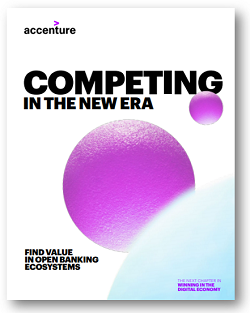When an insect searching for food triggers a Venus flytrap, the carnivorous plant reacts within half a second to capture it. It doesn’t have to get ready for that interaction—it’s always ready. Banks need to have the same type of rapid reaction when it comes to partnership opportunities if they are going to thrive in the complex ecosystem of Open Banking.
In my last blog, I discussed how traditional banks will likely evolve into various open platform business models to ensure future growth. New entrants like banqUP, Revolut and Starling are already attracting consumers to the concept of marketplace banking—and there are indications that many incumbent banks are getting ready to follow suit. This approach wraps the best money-related apps, products and services from third parties around a robust and well-branded core financial services product (such as a current account or payments) to deliver a richer customer experience and create powerful network effects. Incumbent banks are starting to adopt this model to grow their businesses, making their APIs available to outsiders. These include Barclays, BBVA, RBS, Citi, Santander, Capital One, DBS Bank, Goldman Sachs and others. While our recent research shows that only one percent of banking revenue in the US is being generated by open platforms, it has the potential to rapidly mutate into a Red Piranha flytrap that takes bites out of incumbents’ revenue.
We’ve conducted further research to assess where banks stand in their readiness to compete in the emerging open platform economy—examining three requirements for a healthy and collaborative ecosystem:
- Developer portal: the channel environment and experience for developers to interact with bank and customer data
- API offerings: the types of banking products and services being exposed as APIs for developers to consume and develop applications around
- Developer ecosystems: the adoption of Open Banking across a broader developer community

We found that global card services and global financial institutions offer the most advanced and differentiated capabilities across these three dimensions. Banks in southern Europe are differentiated by their platform usability and ecosystem engagement abilities; this explains the relatively higher maturity of developers in these regions. Western European banks seem more focused on exposing APIs that deliver value-added services. Leading digital banks, such as BBVA, which have already made APIs available beyond those mandated by regulations, are presenting various approaches for usage and pricing—a key indicator of developer-portal maturity. Although the developer ecosystems of global banks and card services are clearly ahead of other financial institutions, our research shows that southern European and Nordic banks are rapidly catching up.
Despite the emergence of more aggressive approaches, the majority of incumbent European banks are only offering those APIs required to comply with PSD2 regulations, and very few are moving into value-add APIs. Fintechs and challenger banks, on the other hand, are working to offer a broad range of APIs and look more like non-financial services platforms, such as Amazon, which offer upwards of 100 APIs for third-party consumption. Also, card services like Visa and Mastercard now offer at least 25 API products that enable a range of services from accessing core business services to advanced data insights.
Platform banking is still in its infancy, yet we expect to see an explosion of Open Banking APIs from financial institutions in the years ahead.
Take these steps now to ensure your bank is ready:
- Seek out best practices from outside the financial services industry
- Develop a strategy to distribute open APIs
- Identify the value in going beyond compliance
- Introduce transparency in pricing for API consumption
- Accelerate network effects through platform innovation
I invite you to read more about our research and banks’ relative open platform maturity in our report, Competing in the new era: Find value in Open Banking ecosystems











